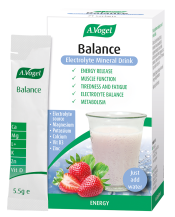What is heat stroke?
Heat stroke occurs when a person is exposed to high temperatures for too long, and often results from heat exhaustion or dehydration. The body simply becomes overworked and its cooling system fails, meaning that body temperature begins to rise dangerously high. This increase in temperature puts pressure on the brain, as well as other organs like the heart and lungs and can severely damage them or cause them to shut down altogether.
The people most at risk are those doing strenuous activity in hot climates – especially if they aren’t used to these kinds of temperatures. This includes hikers, athletes and cyclists. The elderly and the very young are also particularly at risk as their bodies are not as strong. However, anyone can fall victim to heat stroke under certain conditions.
Heat stroke is a life-threatening condition that needs immediate medical assistance.
What are the signs?
Detecting heat stroke early on is vital to minimise the damage caused to the brain and other organs. Many of the signs and symptoms are similar to that of heat exhaustion, though they will be noticeably more severe with heat stroke. The signs of heat stroke are:
- Headache, dizziness or light-headedness
- Nausea or vomiting
- A temperature of 40C or above
- Lack of sweat – this is one major difference between heat exhaustion and heat stroke. Profuse sweating is common with heat exhaustion as the body tries to cool itself down, but heat stroke occurs when this mechanism fails and we stop sweating despite high temperatures
- Rapid heartbeat and breathing
- Confusion, disorientation and slurred speech
- Fever
- Seizures
- Loss of consciousness
What to do if you think you or someone else has heat stroke
If you recognise these symptoms, it is vital that the affected person gets medical help as soon as possible. Call an ambulance immediately or take them straight to the hospital.
While you’re waiting for medical assistance, there are a number of things you can do to help:
- Try to keep the affected person as cool as possible. Move them into an air-conditioned room, remove unnecessary layers of clothing, wet their skin and fan them
- Apply ice packs to their neck, armpits, groin and back as these areas are rich in blood vessels, so cooling these will help carry cooler blood around the body
- Get the affected person into a cool bath or ice bath
- If you are out and about with no access to air conditioned rooms or ice packs, it is vital that you make use of what you can. Use clothes and other materials to create shade for the affected person, wet their skin and fan them with whatever you have – plant material, clothes, or even just your hands.
If you need extra help or advice, call NHS24 as they will be able to talk you through the correct procedures, particularly if the affected person has lost consciousness.
How to prevent heat stroke
Heat stroke can develop very suddenly so it can sometimes be difficult to put preventative measures into place. However, in many cases there are a number of warning signs that develop prior to heat stroke, such as heat exhaustion or dehydration. Treating these conditions is much easier than treating heat stroke.
If you notice the signs of heat exhaustion or dehydration, such as dark urine, a headache, feeling generally unwell, feeling dizzy or feeling nauseous, you should quickly move into a cooler area, take measures to cool yourself down such as a cool bath, and rehydrate yourself with cold water. Replacing electrolytes with coconut water, birch water or a sports drink is also important. If you still feel unwell after half an hour, seek medical assistance.
To avoid these conditions developing in the first place you should:
- Drink plenty of plain water throughout the day to avoid dehydration. I recommend between 1.5 and 2 litres a day but in hot weather you should drink at least another litre on top of that. If you are doing strenuous activity such as hiking, running or cycling in hot temperatures, you will need to drink even more. Everyone is different, so check your urine to see if you’re properly hydrated – it should be clear pale yellow to colourless
- Avoid going out in the sun during the hottest part of the day (11am – 3pm). Sit or walk in the shade instead, and if you do go into the sun make sure you have plenty of sun cream, a wide brimmed hat, and are covered with light cotton clothes. Bringing a fan out with you will help keep you cool
- Wearing light, breathable clothes (such as light cotton) is particularly important for those doing activity in the sun. This will help sweat evaporate off your skin, which is a vital part of your natural cooling mechanism
- Cool down when you feel yourself getting too warm – don’t wait until heat exhaustion develops! A 15 minute trip inside for a cold shower or just to sit in a cool room with a glass of water will help.





 Looking for our products in a store near you?
Looking for our products in a store near you?

